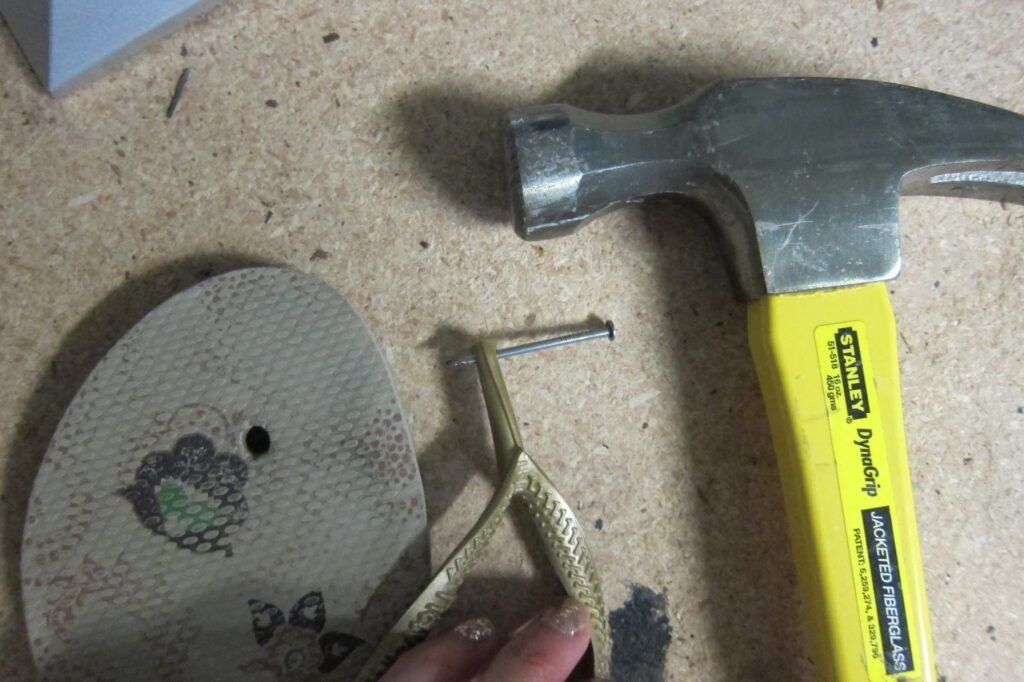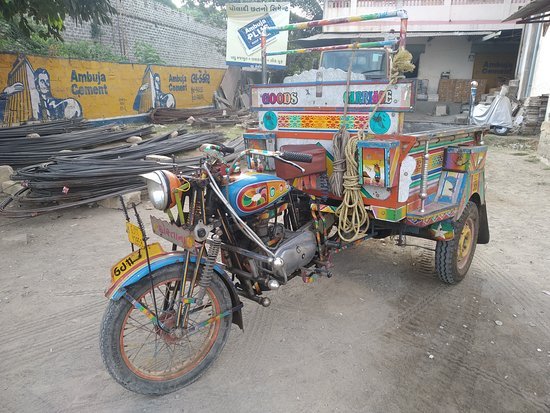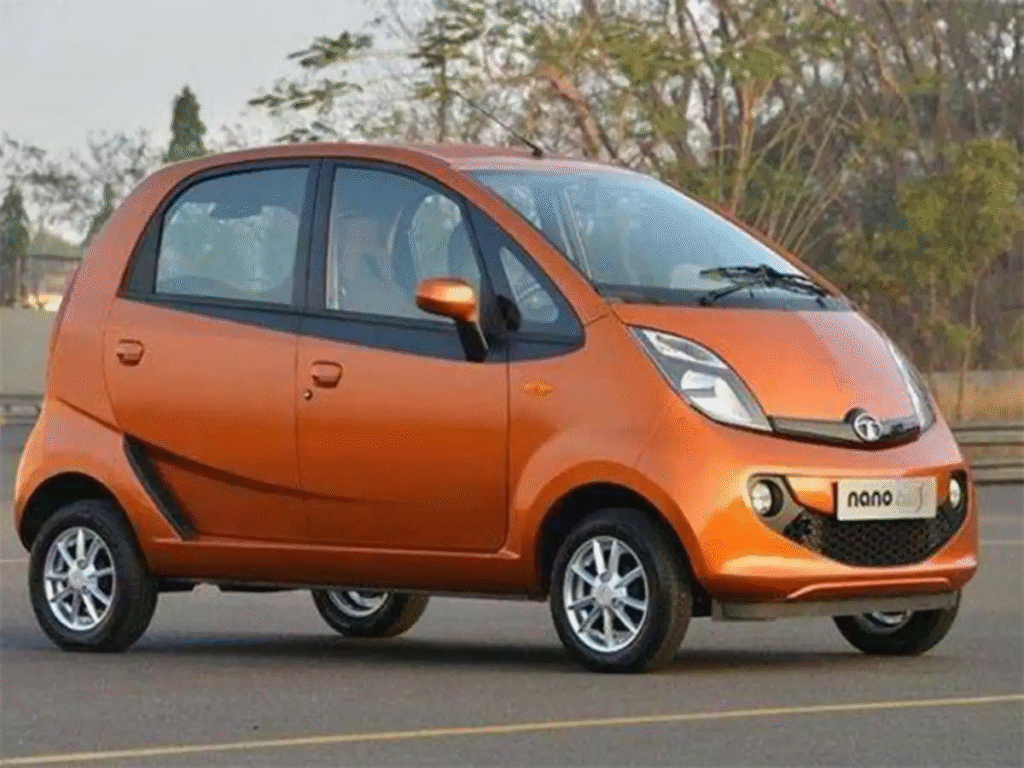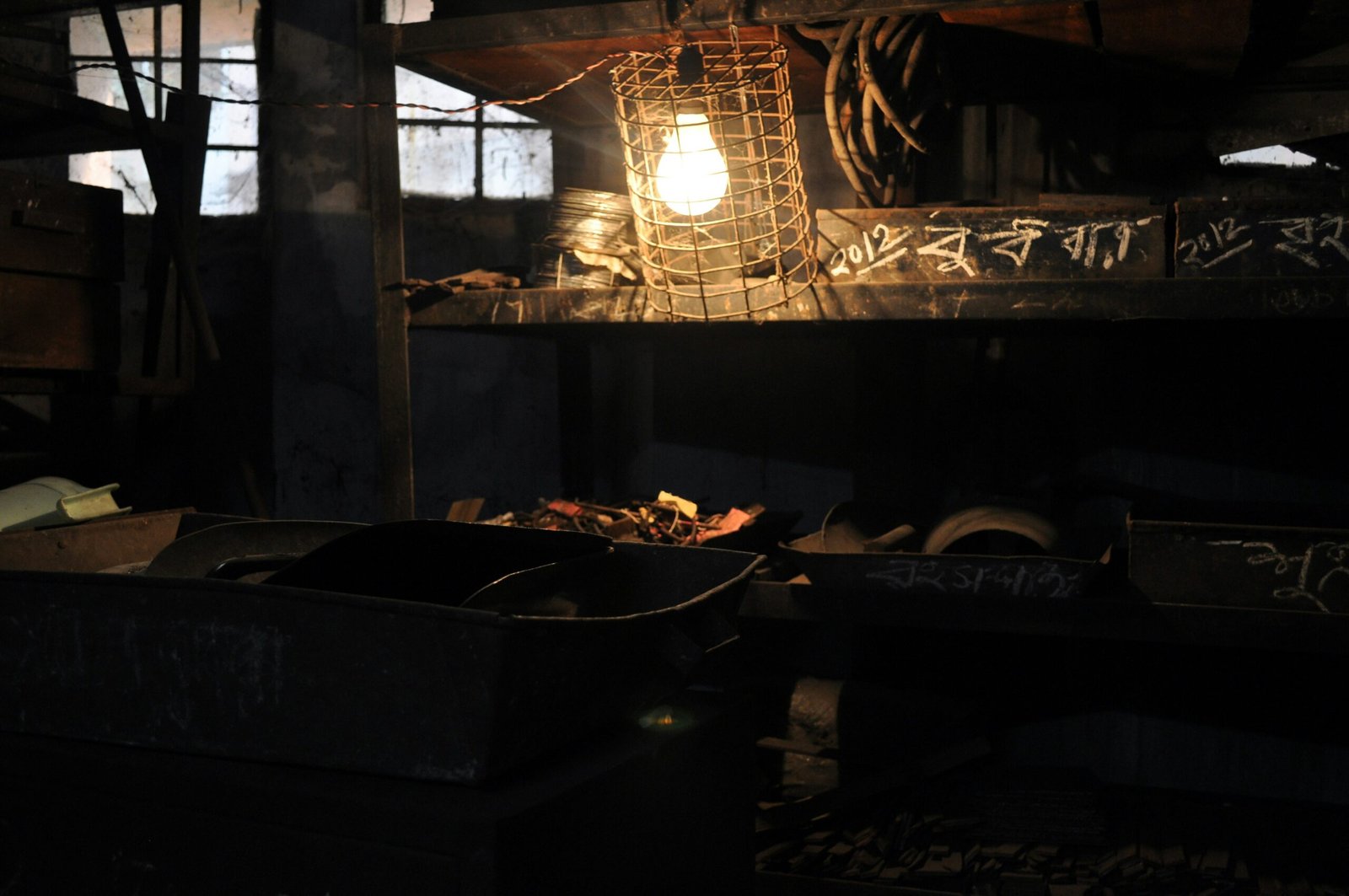When I think about what truly defines the Indian spirit, one word instantly comes to mind—jugaad. I don’t mean it in some half-complimentary, half-sarcastic way the corporate world sometimes uses it to describe quick-and-dirty hacks. For me, jugaad is not just a trick; it’s a philosophy of life. It’s resilience, frugality, and wit rolled into one. It’s about looking at what one has, however little, and stretching it, reshaping it, bending it, until it serves the purpose—or maybe even serves multiple purposes. Simply put, it is self-help at tis best.
I grew up seeing jugaad everywhere, often without it even being called that. My dadi would fix a leaking tap with a tightly wound strip of old cloth until the plumber could be summoned. My father once converted a broken transistor into a makeshift night lamp. And me? As a teenager, I tied the strap of my broken chappal with a paperclip during an exam because there was no way I was hobbling barefoot to the center. That moment, standing in the examination hall, one chappal proudly standing tall thanks to my own engineering marvel, I realized the genius of jugaad.
Today, when minimalism and sustainability are trending hashtags on Instagram, I feel like smiling knowingly. We desi people have been experts at sustainable living long before it was cool. For us, it wasn’t about a lifestyle choice; it was necessity. Frugal living and DIY fixes weren’t aspirational—they were survival. And at the heart of it all lies jugaad.
In this guide, I’ll walk you through various facets of jugaad. Some may make you laugh, others will remind you of your childhood, and some may even inspire you to start looking at everyday life with renewed creativity.
What Exactly Is Jugaad?
The word “jugaad” has no perfect translation in English. People try with words like “hack,” “fix,” or “improvisation,” but none of them really capture its essence. To me, jugaad is about innovation born out of limitation. It’s the science of stretching a rupee, the art of eking out utility from the useless, and sometimes, simply zidd (stubbornness) that refuses to accept defeat.
Most Indians carry a little toolkit of jugaad techniques in their heads. It could be fixing a fan that makes too much noise with a cardboard shim, or using an old cricket bat as a doorstop. It’s about resourcefulness, but with an unmistakable desi twist—some mix of humor, “chalega yaar,” and pure genius.
The Broken Chappal Case Study
Let’s begin with a classic. If you’ve grown up in India, chances are you’ve either witnessed or experienced the phenomenon of a broken chappal. The thong pops out, and suddenly, one of your feet is left naked while the other still has dignity. Now, what to do?
That’s when jugaad magic begins. I’ve seen people fix broken chappals with:
- A hairpin pushed through the rubber sole to hold the strap in place.
- A safety pin or paperclip, twisted strategically, to give new life.
- A discarded piece of cloth tied around to keep the strap from popping out again.

One memorable morning, during a college trip, my friend fixed her slipper with a keychain ring. And that chappal lasted the whole trip! Forget branded soles with air cushioning—what we had was airproof jugaad engineering.
Something about fixing a chappal makes me think—not just about footwear, but about life. Sometimes, life comes apart like a worn-out slipper. You just need something small, an improvised solution, to keep moving until you find a deeper fix.
Newspapers: The Desi Swiss Army Knife
If anyone asks me what the original multi-purpose tool in an Indian household is, I won’t choose a screwdriver or duct tape. I’ll say: newspapers.
Old newspapers in Indian homes are like the holy grail of jugaad. They’re not just for reading—or wrapping vada pav bought near CST. Their magic lies in how they transform into ten different things:
- Cleaning glass and mirrors: Windex? Glass wipes? Nonsense! In every Indian household, mirrors have been wiped to spotless clarity with an old Times of India page.
- Gift wrapping: From Diwali gifts to birthday surprises, many gifts have been wrapped not in expensive paper, but in the entertainment section of the Deccan Chronicle.
- Protecting shelves: Before fancy laminated sheets, newspapers lined every Godrej almirah shelf. They absorbed moisture, kept bugs at bay, and smelled faintly inky.
- Drying soaked shoes in monsoon: Stuffing newspapers inside wet sneakers, we all know, works better than dryers.
- Making envelopes: Dadi and mom carefully folded old newspapers into neat envelopes for keeping bills and recipes.
When I think of sustainability today, I smile. We didn’t need campaigns about recycling. We’ve been reusing har chhoti badi cheez for generations.
Kitchen Jugaads
The kitchen, for me, is the ultimate museum of jugaads. Every Indian family has at least one magical kitchen fix passed down through generations.
- Use of pressure cooker for everything: From steaming dhokla to deep sea–level science projects, cooker is king. Even idli stands find a place inside it.
- Chapati press substitute: No belan? No problem. I once saw a cousin use a glass bottle to roll out chapatis. And you know what? They puffed just fine.
- Broken lid handle fixed with pliers: When the knob breaks, nobody rushes to buy a replacement. We just pick up a rag, place a plier, twist, and voilà.
- Jugaad strainer: When the tea strainer goes missing, my mom has poured chai through the edge of a steel plate. Works like magic—and somehow tastes better.
And yes, let’s not forget the “dabba system.” Every steel dabba has lived multiple lives—first carrying ghee, then sabzi, and occasionally even my brother’s cricket ball collection. Reuse, recycle, relive—that’s our way.
Travel Jugaads
Travel in India without jugaads? Impossible. Whether it’s trains, buses, or road trips, jugaad is the difference between surviving travel and thriving through it.
- Seat stretching: In packed trains, people fold their gamchas to create makeshift pillows and armrests.
- Phone charging: At railway stations, I’ve seen people ingeniously twist wires into loose plugs, balancing them so that the charging point comes alive just for their phone.
- Car shade jugaad: Can’t afford car sunshades? Newspapers stuck on windows with water will do the trick. I still remember our summer road trips with windows pasted white with newsprint.
For any Indian, jugaad is not just about comfort; it’s survival during a 36-hour journey in sleeper class.
Cloth, Plastic, and Bottles
We Indians never throw things away quickly. Old clothes become rags, then pochas, then sometimes even ropes. I’ve seen jeans cut into shorts, then used as cleaning cloth for motorcycles.
Plastic too lives a long Indian life. Bread packets? They become makeshift gloves for handling oily things—or carrying pickles home. Water bottles? We cut them in half, and suddenly it becomes a funnel for pouring oil.
And glass bottles, especially from cold-drink companies? Oh, in the 90s, we returned them for deposit money. But those that stayed back found new destinies—flower vases, pickle containers, water sprayers with a hole poked at the top.
Jugaad in Work and Study
Students in India may be the world’s masters of jugaad. Whether it’s projects or exams, we’ve all done some creative shortcuts.
- Geometry box replacements: Lost your scale? Use the edge of your notebook. Protractor waapas chahiye? Just estimate—Indian maths students know.
- Cheat sheets: Okay, I don’t promote cheating. But admit it—someone in your class would innovate tiny, rolled-up notes hidden inside pencils. Respect for the engineering involved.
- Pen refill extensions: What’s a resourceful Jugaad if not attaching a straw piece to extend a short refill? School genius, truly.
Even in offices today, jugaad continues. From taping wires, to propping laptops with old books to give ‘ergonomic height,’ to converting a broken chair into a tummy-support stool, the desi work environment thrives on improvisation.
Jugaad and Emotions
Jugaad is not just material. It’s also how we live emotionally. I’ve seen families stretch budgets with jugaad meal planning—more water added to dal to feed more people. I’ve seen friends using humor to defuse conflicts. Isn’t that jugaad too—an improvisation of emotions?
Our festivals are full of heartfelt jugaads. One year, my cousins decorated our Ganpati mandap with discarded thermocol and LED fairy lights that had only half the bulbs working. But when lit, it looked magical. We didn’t spend thousands, but we created a beauty out of scraps.
Why Jugaad Matters in Modern India
Many people dismiss jugaad as temporary or low-quality. But in truth, jugaad has helped India survive and thrive. From small villages where tube wells are repaired with bicycle parts to city apartments where people adapt gadgets, we’ve always found our way.
In fact, entrepreneurs today admire the jugaad mindset—lean resources, maximum output. Isn’t that what tech startups are trying? The only difference is that our neighborhood mechanic might not have a LinkedIn profile, but his creative wiring job for your scooter is start-up level innovation.
From Jugaad to Sustainability
In a world drowning in waste, jugaad looks less like poverty and more like wisdom. Every act of reuse, repair, and innovation is an environmental win. By fixing instead of discarding, by improvising instead of buying new, we keep both wallets and the planet healthy.
Our parents unknowingly practiced low-waste living. Plates covered with another inverted plate instead of plastic wrap, dabbas carrying tiffins across decades, fridges lined with old table mats—all of it was jugaad-driven sustainability
The Spirit of Jugaad
What I love most about jugaad is that it is democratic. It doesn’t matter if you are rich or poor, old or young—you will encounter and often embrace jugaad. It’s there in the rural motorbike trolley carrying sugarcane. It’s in the urban Uber driver who tapes a cardboard box as an extra glove compartment.
And it’s not just about fixing—it’s about surviving with a smile.
There’s beauty in it. There’s poetry in it. Life, after all, is not perfect. Chappals break, taps leak, money runs short. But jugaad teaches us to keep going, to innovate, and to laugh.
In a world racing towards more consumerism, I say let’s root ourselves back in jugaad. Because our true jugaad is not just thick patches and paperclips—it is human adaptability itself.
Iconic Jugaad Inventions and Indian Innovations
India has a long tradition of grassroots inventions, but a few have become so legendary that they are now part of national lore and even global business case studies. These examples go well beyond the chappal or newspaper jugaads; they represent the spirit of frugal engineering and desi innovation at its best.
The Chakda: Gujarat’s Jugaad Vehicle

Out in the salt deserts of Kutch, Gujarat, one can see the “Chakda”—an unbelievably robust, low-cost vehicle assembled from diesel Enfield engines and scrap auto parts. Typically, it has a motorcycle front and an open carriage behind, with suspension made from recycled truck springs. It can carry 20+ people and moves easily through the rough, rural landscape. The Chakda isn’t “street legal” in most urban centers, but in rural Gujarat, it’s a hero, ferrying kids to school, farmers to market, and sometimes even weddings full of baraatis. This vehicle is pure jugaad—a blend of Indian resourcefulness and mechanical improvisation.
Punjab’s Rural “Jugaad Gaadi”
In Punjab and throughout North India, the term “jugaad” originally referred to locally fabricated vehicles—wooden carts or skeletal jeeps fitted with a diesel pump engine, built by local carpenters and mechanics. Priced at a fraction of a regular automobile, these “jugaad gaadis” ferry people and produce across fields, negotiating savage roads with ease. For villagers, they’re more reliable than official public transport, and a perfect example of how desperate need breeds world-class hacks—sometimes with uncanny efficiency.
Thermocol Water Walking Shoes
In flood-prone rural India, innovator Dwarka Prasad Chaurasia devised “thermocol shoes” that let villagers walk across water-logged areas by wearing floats made from thermocol and rexine. This is a classic case of using whatever is available to solve a problem, even during natural disasters. Many such inventions, born out of urgent need, continue to serve in villages.
Frugal Innovations That Became Game Changers
The Jaipur Foot
The Jaipur Foot (Jaipur Leg) is an artificial limb developed in Rajasthan, created by Dr. P.K. Sethi and master craftsman Ram Chandra. Unlike expensive global prosthetics, the Jaipur Foot was made using rubber and local materials, making it not just affordable but particularly suitable for Indian needs—allowing wearers to squat, sit cross-legged, and walk barefoot. Recognized worldwide, this device has restored mobility to millions of people and represents Indian jugaad’s humanitarian side.
MittiCool – The Clay Refrigerator
Using centuries-old knowledge and modern need for green technology, Mansukhbhai Prajapati invented Mitticool, a clay refrigerator that works without electricity. It’s made of natural clay and works on the principle of evaporative cooling, making it eco-friendly and affordable. MittiCool has become a symbol of India’s sustainable jugaad—good for both wallet and planet.
Washing-Cum-Exercise Machine
Remya Jose from Kerala, tired of washing clothes manually, created a bicycle-powered washing machine. You just pedal for a few minutes, and it washes your laundry—no electricity needed, perfect for rural India or areas with unreliable power. This DIY solution is now celebrated as a classic Indian homegrown innovation.
The Spirit of Entrepreneurial Jugaad
Indian entrepreneurs have long embraced jugaad as a business principle. Stories abound of legendary innovators.
Gramateller ATM: Power-Saving Cash Dispenser
Vortex Engineering came up with the Gramateller ATM, which runs on minimal electricity—about the wattage of a single light bulb. It’s equipped with fingerprint authentication to help illiterate users and can work during power outages thanks to a backup battery. Now installed in remote Indian villages, the Gramateller typifies how jugaad thinking bridges gaps in infrastructure through flexible, low-cost tech.
Tata Nano: India’s People’s Car

While its sales didn’t live up to initial expectations, the Tata Nano represents the “jugaad” spirit at scale. Designed as the world’s cheapest car, it cut manufacturing costs and features to the bone. It allowed countless Indian families the dream of four-wheel mobility, winning recognition not just in India but internationally as an example of frugal, disruptive engineering.
Drip Irrigation Using Waste Glucose Bottles
Farmers in dry regions of India have taken empty medical glucose bottles to create their own DIY drip irrigation systems. These cost almost nothing, use available waste, and ensure that precious water drips directly to plant roots, conserving resources. It’s simple, effective, and pure jugaad—benefiting millions of small farmers across the nation.
Famous Anecdotes: Everyday Genius
Jugaad isn’t always just about objects—it’s a mindset and way of thinking. Here are some true stories showing how quick thinking and improvisation can solve sticky problems.
- Truck Deflation at Red Fort: Once, an army truck carrying a generator couldn’t pass under a low bridge behind Delhi’s Red Fort. The clever solution wasn’t engineering, but quick-witted jugaad: a passerby suggested deflating the tires by a few inches. The truck passed comfortably—problem solved in minutes, without damage.
- Monkey Runs Away with Wheel Nuts: A couple, stuck on the highway with a burst tire and missing wheel nuts (thanks to a mischievous monkey!), listened to a villager’s quick fix—remove one nut each from the other wheels, and fit three on all four wheels. They got home safely at reduced speed. That’s jugaad logic in action.
The Cultural Impact and Global Recognition
The world is now studying jugaad. B-school case studies are written on our frugal innovations. Terms like “frugal engineering” and “disruptive innovation” are modeled after Indian examples. Companies like GE, Google, and Tata have embraced the jugaad philosophy to quickly prototype, pilot, and pivot in fast-changing markets.
From the legendary Mumbai Dabbawalas using color-coded tiffin box delivery to the indigenously crafted Meen Body Vandi (motorized fish cart) in Tamil Nadu, jugaad solutions thrive across India, proving that it’s not always high technology or big budgets that solve the day’s problems—sometimes it’s simple, boundless ingenuity.
Final Thoughts: Jugaad as Modern Wisdom
Reflecting on these stories, I feel immense pride in our jugaad mentality. It’s not just about making do—it’s about seeing possibility where others see waste, finding hope where there’s only scarcity, and always believing that Indian genius can turn even the toughest problem into an opportunity.
In a world obsessed with the new, let’s not forget the old ways that kept us going. Jugaad is part emotion, part invention, and all heart. Whether fixing a broken chappal with a hairpin or building an entire economy out of necessity, it teaches us one thing—never underestimate the power of the human mind to adapt, survive, and thrive.
So the next time a crisis hits, don’t panic. Look around, look within. There’s a bit of jugaad waiting to be discovered, and trust me—kuch na kuch toh ho jayega!





This piece resonates deeply with anyone familiar with Indian culture. It’s a powerful reminder of how necessity breeds creativity, and how, in the face of constraints, people often discover new solutions that are not only efficient but beautiful in their simplicity. The blend of humour, practicality, and ingenuity in the examples makes jugaad feel like more than just a cultural trait; it’s a life lesson in adaptability and joy in the face of adversity.
-Abhi
Thank you Abhi, for your kind words and support.
As Indians, I believe, living without Jugaad is quite the impossibility.
Anil
A very well written piece, that resonates with probably every Indian family. That’s our way of teaching the world what sustainable living is, deeply rooted in our every day practice, through generations.
Absolut’ Ms. Mamita
Thoroghly agree with you.
Guess that’s the reason why Trumps’ tariffs didn’t bother us much.
Thanks
Anil
I do agree with almost everything you mentioned. And I’m proud to have lived a life full of Jugaad. And it’s a term that needs more respect than it actually receives,just the way we respect “sustainability “, “perseverance “, etc
Absolut’ Mr. Sanjay.
Thank you for agreeing to the fact that most of Indians have been through, and still go through these Jugaad phases.
In fact, it is sustainability since we do not waste anything!
Thanks
Anil
A beautifully written article on a proud Indian way of living -JUGAAD. A skill that the other so called developed societies give fancy names to and proudly flaunt. Proud to live a JUGAADU life
So Sanjay,
Do you think we can beat Mr. Donald Trump’s tariffs on us?
Or, are we already?
Proud as a peacock mate.
Thanks again.
Anil
Excellent summation of various Jugaad we invent in different situation and of everything around.. many of these are exported ignorantly my us when we travel or settle outside… there is much to learn from Africa on Jugaad as poverty drives this Jugaad culture.
Absolutely Rakesh.
Very well put, happy that you liked it!
Thanks
Anil